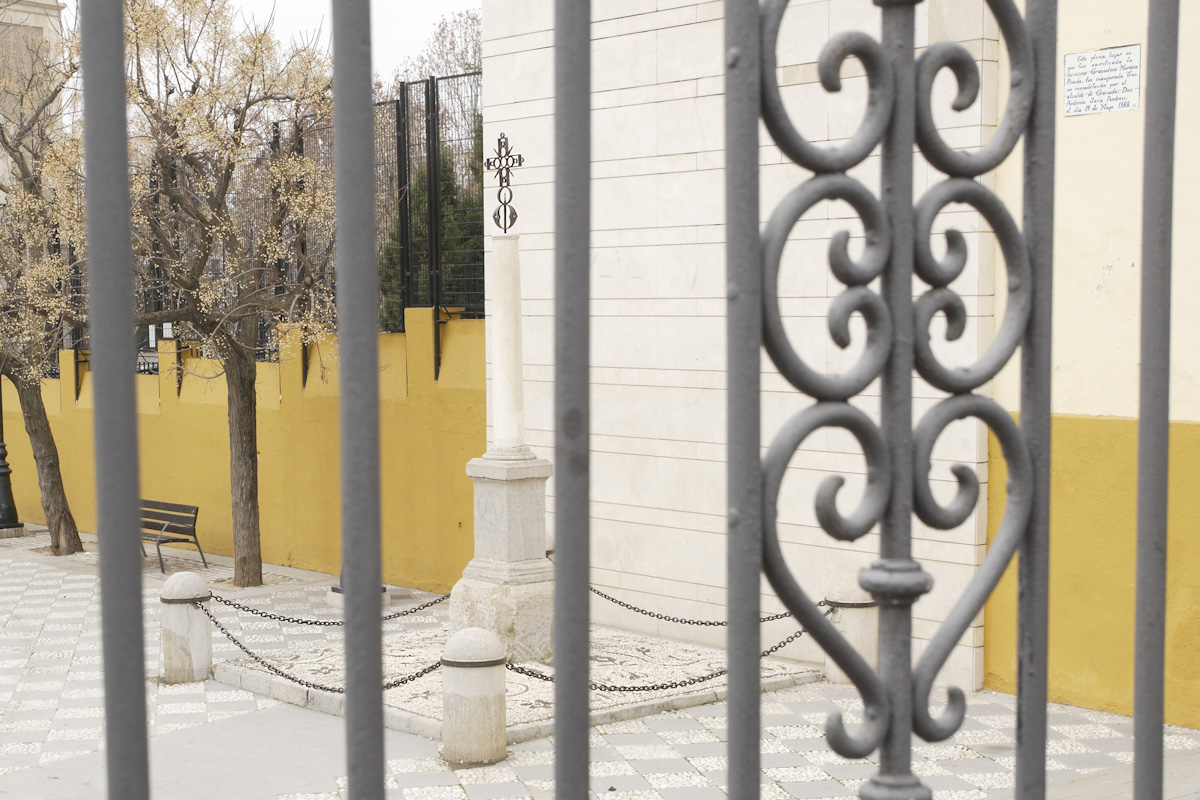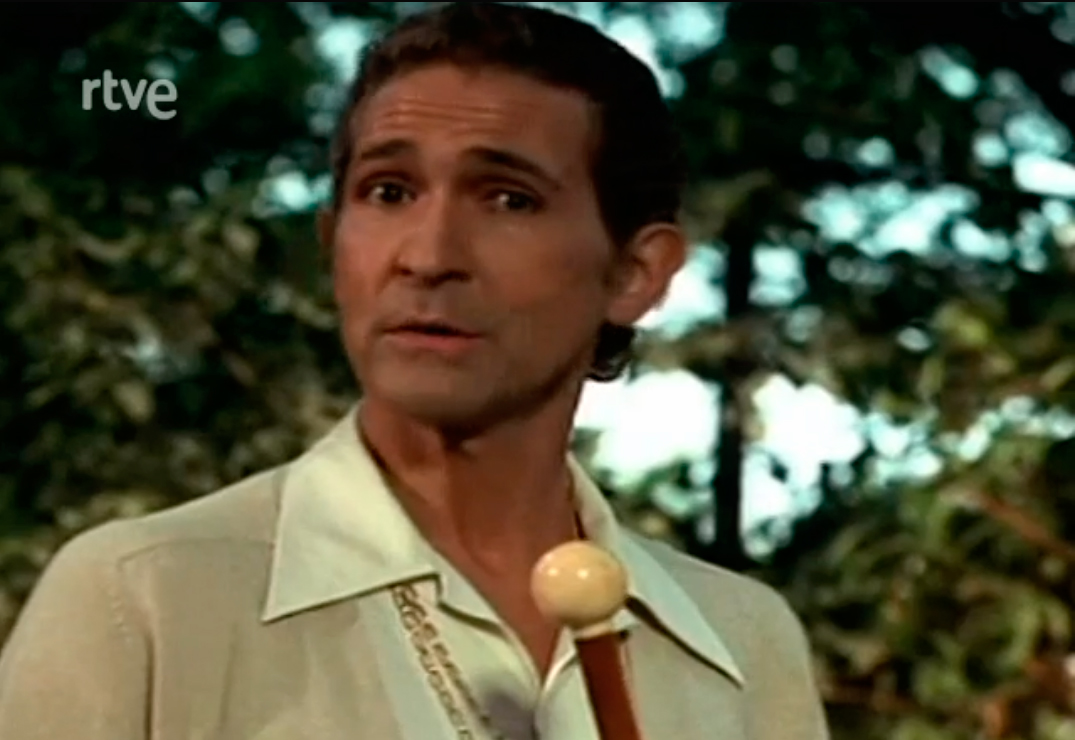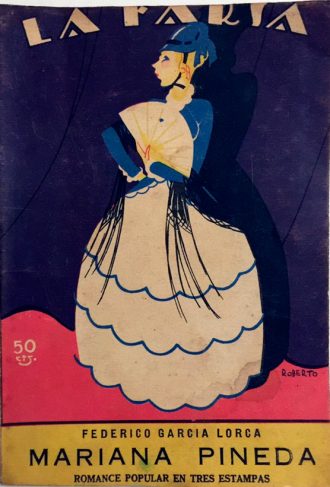
The play begins with a prolog where some girls sing the romance about the heroine. A curtain appears representing the Arco de las Cucharas (Arch of the Spoons) and a perspective of the Bibarrambla square. The clothes are an indication of the fashion of 1850. Then, jumping back in time, the story of Mariana Pineda begins, divided into three timestamps.
The protagonist secretly embroiders a liberal flag for Don Pedro de Sotomayor, a member of a revolutionary movement in Granada in the first half of the 19th century. Mariana, a widow with two children, is in love with Don Pedro and helps him flee when he escapes from the authorities.
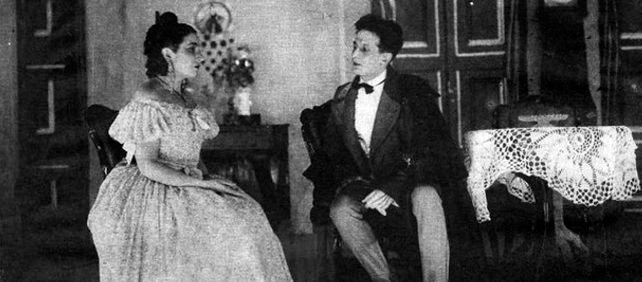
Pedrosa, the city’s crime mayor, who pursues the conspirators and is aware that the embroidered flag found is hers, tries to get Mariana to agree to his amorous demands. She refuses and does not yield to his blackmail, is imprisoned and confined in a convent.
Don Pedro tries again to get her to denounce the conspirators, promising to forget her crime, but she will not denounce him. At all times she hopes that her beloved will come to free her, but she will not see her dream come true and will be executed by guillotine in the name of freedom.
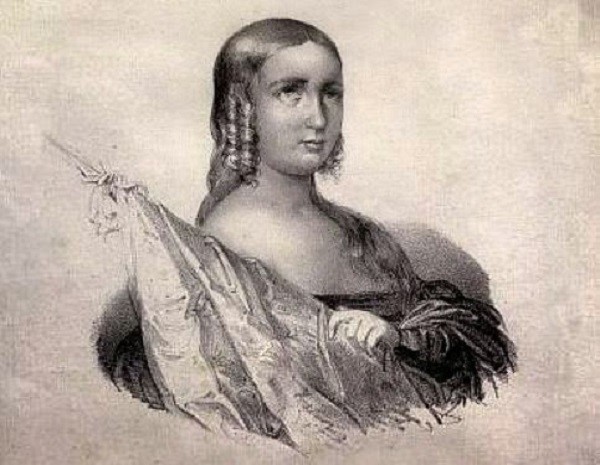
The play premiered in 1927 (on June 24 at the Goya theater in Barcelona and on October 12 at the Fontalba theater in Madrid). The dictatorship of Primo de Rivera prevented Gregorio Martínez Sierra from directing the play, but a year earlier he abandoned the project. Finally, it will be the company of Margarita Xirgu that will premiere the play. Cast: Margarita Xirgu (Mariana Pineda), Carmen Carbonell (Amparo), Eugenia Illescas (Doña Angustia), Pascuala Mesa (Isabel la Clavela), Julia Pachelo (Sor Carmen), Luis Peña padre (Fernando), Alfonso Muñoz (Pedro de Sotomayor), Francisco López Silva (Pedrosa), Luis Peña Illescas (Boy).
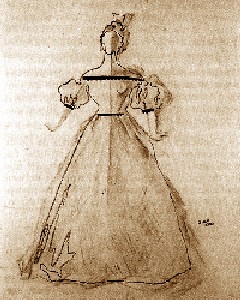
The set and costumes were designed by Salvador Dalí. The play was published in the collection called The Farse with drawings by the author himself in 1928. On April 29, 1929 it was premiered in Granada by Margarita Xirgu, at the Cervantes theater (in the Mariana Pineda Square presided over by her statue), shortly before the poet embarked for New York.
Federico García Lorca mixed historical data with those of romance and popular legend. The real Mariana Pineda was younger when she died (26 years old) than the character in Lorca’s drama (37 years old). She was a Spanish liberal executed during the Restoration of Ferdinand VII.
She was a widow and had two children. It was during the Liberal Triennium when she adhered to the liberal cause and after the new restoration of absolutism of Ferdinand VII she welcomed persecuted liberals into her home. She was away from Granada for two years and when she returned he helped a cousin of her called Fernando Álvarez Sotomayor (Lorca changed his name) to escape. The mayor of the crime of Granada, Ramón Pedrosa suspected her and went to her house on several occasions. On March 18, 1831 the police broke into her house (Calle del Aguila, in Granada). They found the flag there and she was placed under house arrest. After her escape attempt, she was imprisoned in the convent of the Arrecogidas de Santa Maria Egipciaca. She was condemned to death and executed on May 26, 1831.
There is no data to prove her love for her cousin or the harassment she suffered from Pedrosa.
The prolog of the play begins with a curtain representing the Arab Arco de las Cucharas (Arch of the Spoons) and with a perspective of the plaza Bibarrambla (Bibarrambla square). Some girls sing a romance then known and sung in Granada about Mariana Pineda: “¡Oh, qué día más triste en Granada, [Oh, what a sad day in Granada,] / que a las piedras hacía llorar [that made the stones cry] / al ver que Marianita se muere [to see that Marianita dies] / en cadalso por no declarar!” [by guillotine for not testifying!”]. The scene is later than the story told. The play is set in Granada in the 19th century. There are allusions to many places in the city: Bibarrambla square, the Albaicín, Alhambra, Darro river, Alpujarra, Alameda del Salón, Zacatín, Church of Santa Ana, Genil river, etc.
In Granada there is a square, the plaza de Mariana Pineda, with a statue to the heroine, from 1873, which Federico constantly saw from his window. It is close to what was his home on the Acera del Casino (he used to live at Acera del Casino 31, and then at number 15, from 1917 to 1933), next to his club El Rinconcillo (in the Alameda cafe, now Chikito Restaurant, in Campillo square) and next to the Cervantes theater (also Campillo square and Mariana Pineda square), which disappeared.
In Granada, in the Plaza de la Libertad (Liberty Square) (inaugurated in 1988), in front of the Triunfo gardens, there is a reminder of the place where the heroine was executed. On the four sides of the base of an iron cross there is an inscription from the 19th century: “On May 25, 1831, young Mariana Pineda was sacrificed in this place destined to death for crimes committed, because she longed for the freedom of the homeland. In 1840, The Constitutional City Council and Territorial Court ordered that in memory of such an illustrious victim, the sacred sign of our Holy Religion be placed there and that no more executions of justice be carried out at that place”.
On May 5, 1929, a banquet was held at the Hotel Alhambra Palace in honor of Federico García Lorca and Margarita Xirgu following the performance of Mariana Pineda in Granada, at the Cervantes theater. The banquet was given by the director of El Defensor de Granada newspaper, Constantino Ruiz Carnero. Among those present were Falla, Fernando de los Ríos, the author’s father… and other personalities sent their support by mail, such as Dalí or and Melchor Fernández Almagro.
In the small neo-Arabic theater of the Hotel Alhambra Palace Lorca gave public readings of his work on several occasions, for example, on the eve of the Cante Jondo (Deep Song) Contest, on June 7, 1922, an artistic evening took place there as part of the propaganda that was being given to the event.
The event was opened by Antonio Gallego Burín, vice-president at that time of the Centro Artístico, followed by guitarist Manuel Jofré and then Lorca. The poet read several compositions from Poema del cante jondo (Poem of the Deep Song). Shortly after the tribute banquet mentioned above, on May 18, 1929, he returned to the Palace to offer a recital of poems with a selection from Libro de Poemas (Book of Poems), Canciones (Songs) and Romancero gitano (Gypsy Ballads). These public interventions were followed by the complimentary chronicle the next day in El Defensor de Granada which said that the reading had been a success.
